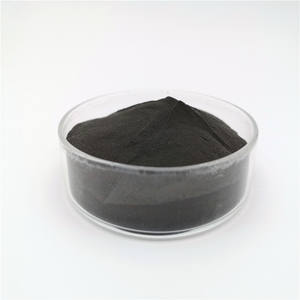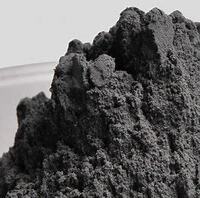High-Quality Silicon Carbide Products | Advanced Ceramic Solutions
(What is the lithium Intercalation Mechanism of Graphite?)
The U.S. and its allies plan to impose sanctions on more Russian industries and supply chains.
The US government representatives recently visited Europe to consult with allies on strengthening and enforcing sanctions to punish Russia. They also plan to take action to disrupt their critical supply chains.
The US government claims that the sanctions imposed on Russia since the invasion began on February 24 have proved extremely effective, plunging Russia into a financial crisis. The sanctions include a freeze on the Russian central bank’s foreign exchange assets, a ban on hard currency transactions by major Russian banks and wealthy individuals, and export restrictions on advanced semiconductors and other technologies. The sanctions have weakened the Russian economy and left the Kremlin with fewer resources.
The volatile international political situations will continue to affect the markets and prices of many commodities like the Graphite.
Graphite has good conductivity, high crystallinity, and a well-layered structure. It is very suitable for repeated intercalation and deintercalation of lithium ions. It is currently the most widely used and most mature negative electrode material. After lithium ions are intercalated between the graphite layers, a lithium intercalation compound LixC6 (0≤x≤1) is formed, and the theoretical capacity can reach 372mAh/g (x=1). The reaction formula is: xLi++6C+xe-→LixC6
Lithium-ion intercalation changes the stacking mode between graphite layers from ABAB to AAAA.
Graphite modification treatment
Since the graphite interlayer spacing (d≤0.34nm) is smaller than the crystal plane interlayer spacing (0.37nm) of the graphite lithium intercalation compound LixC6, the graphite layer spacing changes during the charging and discharging process, which is easy to cause the graphite layer to peel off, pulverize, and also occur. Lithium ions and organic solvent molecules co-intercalate into the graphite layer, and the organic solvent decomposes, affecting the battery cycle performance.
Through graphite modification, such as oxidation on the surface of graphite and coating of polymer pyrolytic carbon, composite graphite with a core-shell structure can be formed, improving the charge and discharge performance of graphite and increasing the specific capacity.
Other anode materials
At present, graphite is the mainstream commercial lithium battery negative electrode material. Its theoretical gram capacity is 372mAh/g. The graphite negative electrode material with better performance on the market can reach 360mAh/g, and the gram capacity gradually tends to the limit value. Although graphite as a negative electrode material has disadvantages such as low gram capacity and cycle deviation, because of the high-cost performance of graphite-based negative electrode materials, it will not be replaced by new materials immediately. The specific reasons are as follows:
1. The new anode material technology is immature, and it will take a long time for performance improvement;
2. The price of new anode materials is higher, and the price advantage of graphite anodes is obvious;
3. The negative electrode material needs to be used in combination with the positive electrode material, electrolyte, etc., and the specific capacity of the current positive electrode material is generally low.
High-quality graphite supplier
Luoyang Moon & Star New Energy Technology Co., LTD, founded on October 17, 2008, is a high-tech enterprise committed to developing, producing, processing, selling, and technical services of lithium-ion battery anode materials. After more than 10 years of development, the company has gradually developed into a diversified product structure with natural graphite, artificial graphite, composite graphite, intermediate phase, and other negative materials (silicon-carbon materials, etc.). The products are widely used in high-end lithium-ion digital power and energy storage batteries. If you are looking for Lithium battery anode material, click on the needed products and send us an inquiry:sales@graphite-corp.com
Recently, the first press conference of the Boao Forum For Asia Annual Conference 2022 was held. Two flagship reports were released at the conference: "Asia's Economic Prospects and Integration Process 2022" and "Sustainable Asia and the World 2022-Green Transformation in Action in Asia".
The flagship report points out that the global economy will recover in 2021, and the pace of economic integration in the Asia-Pacific has not stopped even in the face of the impact of COVID-19. The Asia-Pacific region has provided new impetus for the world's economic recovery and institutional building.
The report gives an outlook on the Asian economy, noting that a number of factors will affect Asian economic growth. For example, mutated strains such as Delta and Omicron have become more transmissible, and many economies are experiencing epidemic peaks again. The Ukraine crisis has triggered geopolitical changes in Asia and Europe, leading to higher commodity prices, which may affect the global energy supply and energy transformation.
The report pointed out that the Asian economy will still be in the process of recovery in 2022, but the growth rate may moderate. According to the report, Asia's economic growth in 2022 is likely to be lower than the current IMF forecast, which is projected at 4.8%.
Affected by several factors, the supply of the Graphite is erratic and thus its prices are expected to go higher in the future.
(What is the lithium Intercalation Mechanism of Graphite?)







